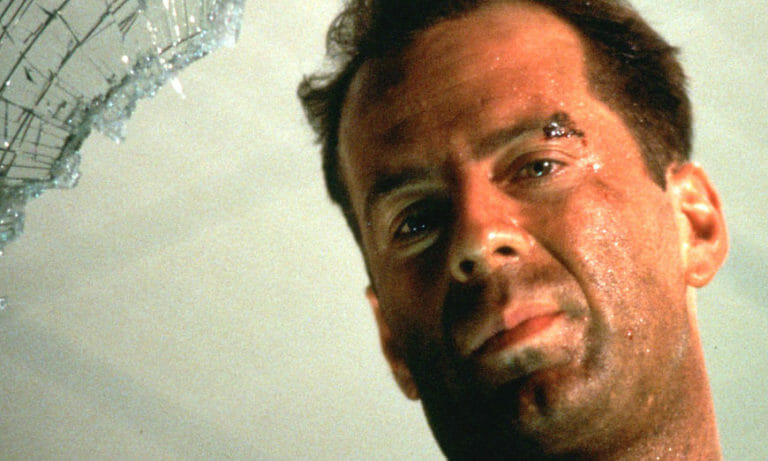By Eric Owusu · July 12, 2015

Die Hard is ranked in many opinions as one of the greatest Action-Adventure movies ever made. But it wouldn’t be so highly regarded if its screenplay were unimaginative. Writers Jeb Stuart and Steven E. DeSouza crafted a screenplay that moves, introduces characters fluidly, and conveys fast-paced action scenes and tension in creative and thrilling ways.
When writing your own action screenplay, it’s your job to give the hero(s) several things that will make them pop to readers and audiences, and stand the test of time.
Give Your Hero Personality
The Die Hard movies and their protagonist John McClane have been celebrated and imitated since their debut in 1988. McClane is a funny, determined, interesting hero who spits out funny witticisms and good comebacks the entire movie.
McClane talks himself through tense situations during the action of the screenplay. At one point, he pulls a fire alarm to get the authorities to come to the Nakatomi Plaza building to help him, his wife, and hostages escape. When he sees fire trucks swing off Santa Monica onto the Avenue of the Stars, he says out loud, with no one else around him, “C’mon, baby… Come to Papa. I’m gonna kiss your Goddamn dalmatian.” We’re already rooting for this hero to beat the bad guys and save the hostages, but we like him even more because he’s funny and has personality. He gives situations a different level of interest. When writing your action hero, be sure to give them a heroic sense of humor or interests characteristics as well.
Give Them Stakes
All good movies need conflict; things that keep the protagonist for achieving their desires. And most action movies need stakes that involve explosions and loved ones in dire straits. In the first act of the Die Hard screenplay, we are introduced to a jetlagged John McClane, his estranged wife Holly, with whom he’s trying to reconcile on Christmas, and his young children. When the bad guys take his wife and her coworkers hostage, it’s up to McClane to save them and stop the villains. He has to stop the bad guys, stay alive, save his wife, and see his children. These stakes give our hero goals to strive towards. As they achieve them, we cheer and hold our breath as they come face to face with another conflict that might end them. Keep your action screenplay full of intense stakes for your hero to operate under and to keep your audience invested.
Give Them Helpful and Hindering Supporting Characters
Action movies really thrive because of their casts. Bruce Willis ended up being a great John McClane, but McClane couldn’t have been that great without the characters around him. There are characters he wants to reunite with, characters he has to do battle against, and characters that help him save the day. His wife Holly, his limo driver and confidants Argyle and Sgt. Powell, his villains Gruber and his gang, and his children John Jr. and Lucy, a.k.a. Goose.
The supporting characters all help paint McClane as a multifaceted character. He is capable of killing villains, loving his children, joking with Argyle and even the sleaze ball Ellis, and being a good man to Holly, all in the one hundred eighteen pages of the Die Hard screenplay. Be sure to give your action hero a cast that compliments them, propping them up to be the complicated protagonist that will carry the whole screenplay to victory.
Give Them A Lot of Crazy Resilience
John McClane arrives in California jetlagged and nervous about seeing Holly. Then Gruber and his goons take the plaza over and terrorize the people inside. They shoot at McClane like he’s a shooting range target, their whole time together. Even at the end when every baddie seems to have been disposed of. McClane is also barefoot during all of the action, even as he escapes a gunfight with Gruber and Franco and lodges a shard of glass into his bare foot.
Despite all the adversity he faces and near death experiences he escapes, he keeps his calm and keeps focused on the mission of stopping Gruber. He’s a crazy American cowboy who says the probably now patented “Yippe-ki-yea” while Gruber has a gun to Holly. McClane has got to be some sort of crazy, and everyone in the building under siege from Gruber sure is glad he is.
Be sure to give your protagonist heroic resilience in the face of danger, adversity, and the threat of death. It’s another characteristic that audiences love to see exhibited by a formidable hero. And their fun as all get up to write. Who knows? You might write a heroic character that’s so compelling that they have you saying Yippe-ki-yea!